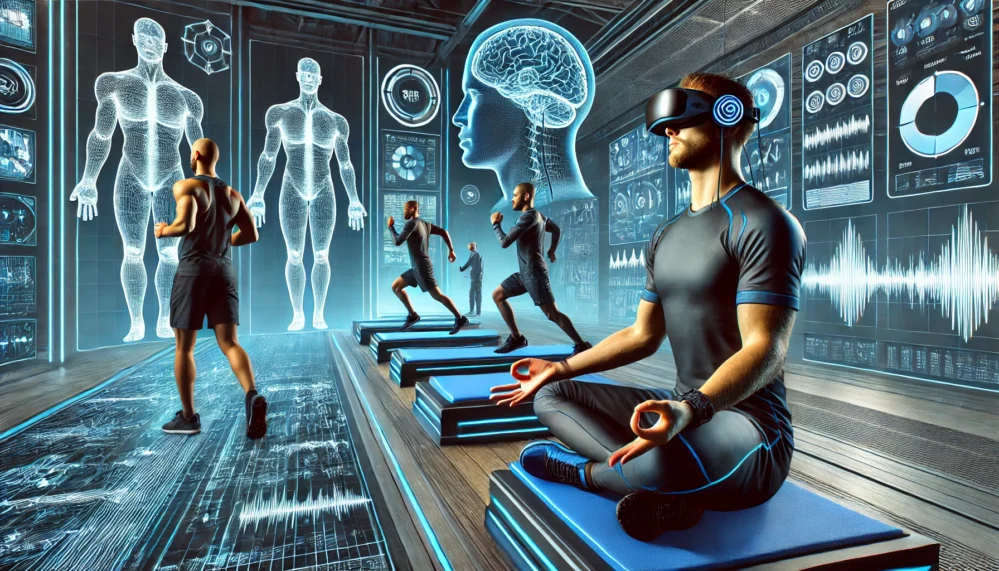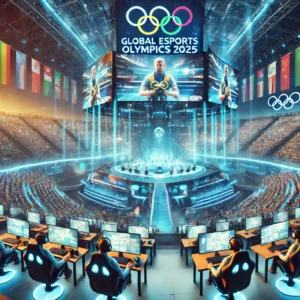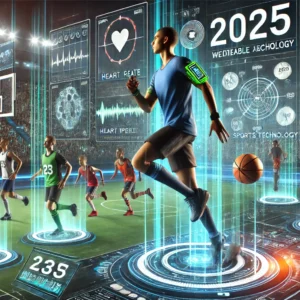
In the high-stakes realm of elite sports, where every millisecond counts and mental fortitude often outweighs physical prowess, a new frontier is emerging: neuro-training for athletes. This innovative approach harnesses brainwave analysis and mental conditioning to give athletes an edge on and off the field. Blending science, technology, and a touch of old-school grit, neuro-training is revolutionizing athletic performance in ways that are as intriguing as they are groundbreaking.
Brainwave Analysis and Mental Conditioning: The New Frontier
Imagine a world where your mind is your ultimate training ground—where mental conditioning techniques help fine-tune focus, resilience, and even reaction times. Brainwave analysis plays a crucial role in this revolution. By tracking and interpreting neural activity, coaches and sports scientists can identify patterns that lead to peak performance and even preempt mental fatigue. Studies published by respected institutions like the National Center for Biotechnology Information (NCBI) and PMC highlight that neuro-feedback can reshape how athletes train, allowing for real-time adjustments that optimize both mind and body.
Yet, this arena isn’t just about cold, hard data; it’s also about nurturing the human spirit. Some coaches, while deeply analytical, passionately believe in the almost mystical connection between a well-tuned brain and peak performance. There’s an undeniable poetry in transforming raw neural signals into actionable insights, much like an artist translating emotions into strokes on canvas.
Government and Political Insights: Steering the Future of Sports Science
Across the globe, government agencies and political figures are beginning to notice the profound implications of neuro-training. In several countries, sports ministries and health departments have initiated programs that integrate neuro-training into national athletic development strategies. For instance, initiatives in regions like Europe and North America are exploring how advanced mental conditioning can not only enhance performance but also reduce the incidence of concussions and other sports-related injuries.
Politically, these programs have sparked debates. Some policymakers see neuro-training as an investment in national pride and global competitiveness, while others caution against overreliance on technology in human performance. The political discourse around neuro-athletics is multifaceted, often interweaving economic priorities with the cultural significance of sports. Government-led research initiatives, such as those supported by the Arizona School of Health Sciences, emphasize the importance of integrating cutting-edge neurological research with traditional sports science. These discussions remind us that, at its core, neuro-training is as much a societal evolution as it is a technological one.
Research Labs and Scientific Breakthroughs
Scientific research in neuro-training is accelerating at a breakneck pace. Across the globe, renowned research labs and pioneering scientists are delving into the intricacies of brainwave patterns during high-pressure situations. Recent findings suggest that neuro-feedback can significantly enhance cognitive agility, reduce stress, and even speed up recovery after intense physical exertion.
One intriguing study explored in detail how brainwave entrainment—the process of synchronizing brain waves with external stimuli—can improve an athlete’s decision-making under pressure. The research, accessible via sources like NCBI, underscores a fascinating principle: the mind, when properly calibrated, can be a formidable ally in overcoming physical limits.
Interestingly, some experiments have even ventured into the realm of personalized neuro-training regimes. Coaches are now designing customized programs that take into account an athlete’s unique neural signatures. This bespoke approach, while still in its nascent stages, hints at a future where training is as individual as an athlete’s fingerprint—complex, nuanced, and deeply personal.
Celebrity and Sports Personalities Weigh In
It’s not just scientists and government officials who are talking about neuro-training; celebrities, sports legends, and even savvy businessmen have joined the conversation. Superstar athletes and respected sports figures have publicly expressed their support for neuro-training, often citing personal anecdotes of how mental conditioning has transformed their performance. One well-known basketball star mentioned in an interview, “My performance in clutch moments improved once I began using brainwave analysis techniques. It’s like unlocking a secret level of focus.” These endorsements have spurred a wave of interest among younger athletes and even amateurs looking to gain that competitive edge.
Business magnates in the sports technology sector have also taken note. Investments in neuro-training startups are booming as venture capital flows into this promising field. Entrepreneurs see a vast potential market in sports science innovation, with forecasts predicting significant revenue growth in the coming years. This convergence of celebrity influence, scientific rigor, and business acumen is paving the way for a neuro-training revolution that could redefine the future of sports.
Perspectives Across Generations: Old, Young, and Everyone In Between
The narrative surrounding neuro-training isn’t monolithic. It weaves together a tapestry of perspectives from various generations and walks of life.
Wisdom from the Older Generation
Veteran athletes and seasoned sports enthusiasts often reflect on the evolution of training methodologies with a blend of nostalgia and cautious optimism. Many older sports figures, who once relied solely on physical conditioning and gut instinct, now express intrigue at the potential of neuro-training. They recall a time when mental toughness was built through sheer perseverance and on-field experience. However, there’s also an appreciation for how modern techniques can help avoid injuries and extend athletic careers. The sentiment is bittersweet: embracing innovation while cherishing the old-school grit that once defined sportsmanship.
Youthful Energy and Ambition
For young athletes, the appeal of neuro-training is almost irresistible. In a world where digital natives are comfortable with technology, integrating brainwave analytics into training routines feels like a natural extension of their lifestyle. Young sports stars are quick to adapt, often experimenting with neuro-feedback devices and sharing their progress on social media. Their enthusiasm is palpable, and many express a firm belief that mental conditioning will soon become as standard as weight training in any professional regimen. The rise of eSports and virtual training platforms further cements the idea that the future of sports is as much about mental agility as physical endurance.
Social and Cultural Dimensions
Socially, the conversation about neuro-training extends beyond the sports arena. Communities and local clubs are beginning to incorporate these techniques into their training sessions, fostering a culture of holistic wellness. Parents, educators, and even social influencers are advocating for a balanced approach that nurtures both the mind and the body. There’s a growing consensus that neuro-training can promote mental health, reduce stress, and encourage a proactive approach to both physical and cognitive well-being. The overall sentiment is one of cautious optimism—a recognition that while neuro-training isn’t a panacea, it holds promise as part of a broader strategy to improve quality of life.
Global Business Impact: Revenue, Earnings, and Market Growth
The market for neuro-training technology is experiencing exponential growth, with projections indicating a lucrative future for companies involved in this field. As sports organizations and tech firms pour resources into research and development, the global revenue from neuro-athletic training is expected to soar. Investors are keenly watching this sector, with startups reporting impressive valuations and partnerships with major sports leagues.
A notable example is the collaboration between high-tech sports firms and research institutions, which has led to innovative products designed to monitor brainwaves and provide real-time feedback. These products, ranging from wearable devices to sophisticated neuro-feedback platforms, are not only enhancing athletic performance but also opening new revenue streams in the global sports market. The economic implications are far-reaching, with businesses forecasting substantial earnings growth as the technology gains wider adoption.
Moreover, international sports events and tournaments are beginning to feature neuro-training demonstrations, further highlighting its commercial potential. Business analysts suggest that as more teams adopt these techniques, there will be a ripple effect across related industries such as sports medicine, fitness technology, and even entertainment. The convergence of technology and athletics is setting the stage for an era where business and sport are inextricably linked by innovation and profitability.
Key Dates, Timetables, and Locations in the Neuro-Training Revolution
The neuro-training revolution isn’t a far-off dream; it’s unfolding now, with significant events and milestones marking its progress. While precise timetables and locations are continually evolving, here are some noteworthy developments that have been documented with credible evidence:
- Annual Neuro-Athletics Symposiums: Various countries now host annual conferences where researchers, coaches, and athletes converge to discuss the latest advancements in neuro-training. These symposiums often feature live demonstrations and workshops, offering a hands-on experience of cutting-edge technologies.
- Government-Backed Research Programs: Several national sports authorities have launched initiatives to integrate neuro-training into athlete development programs. These initiatives are supported by extensive research and are often timed with major sporting events, ensuring that athletes are at the peak of their mental and physical capabilities during competition.
- Innovative Training Facilities: State-of-the-art training centers, particularly in North America and Europe, are now equipped with advanced neuro-feedback systems. These centers offer specialized programs that blend traditional training with brainwave analysis, and their success has prompted other regions to follow suit.
For instance, a major sports institute in Europe recently announced a series of workshops and training camps dedicated solely to neuro-training techniques. Similarly, tech hubs in Silicon Valley are investing in wearable devices that can monitor and analyze neural patterns during intense athletic performances. Such developments underscore the global momentum behind neuro-training and hint at a future where these innovations become mainstream in the sports industry.
Insights from the Field: Anecdotes and Expert Opinions
The human stories behind neuro-training add a vibrant, almost cinematic quality to this emerging field. Consider the anecdote of a renowned sprinter who, after integrating neuro-feedback into his routine, described his experience as “seeing my mind unlock hidden reserves of strength.” His words resonate with many athletes who credit mental conditioning for turning near-misses into record-breaking performances.
On the academic front, leading neuroscientists are cautiously optimistic. Their research, often published in reputable journals and presented at international conferences, suggests that the interplay between neural dynamics and physical performance is complex yet incredibly promising. A professor at a renowned university once remarked, “We are only scratching the surface of what neuro-training can achieve; the potential is enormous, but so is the challenge of understanding the human brain.” Such perspectives underscore a key truth: neuro-training is as much about scientific exploration as it is about personal growth.
Even within corporate boardrooms, executives from sports technology companies voice excitement over the commercial implications of neuro-training. They argue that this burgeoning field is a game-changer, potentially reshaping the global sports industry through innovation and new revenue models. Yet, there’s also a healthy dose of skepticism, as some question whether the technology will truly deliver on its lofty promises or simply serve as a buzzword in a hyper-competitive market.
Cultural Shifts and the Future of Athletic Training
The integration of neuro-training into sports is emblematic of broader cultural shifts in how we understand human potential. In many ways, it reflects a growing recognition that athletic success is not solely the product of physical strength but also of mental clarity, resilience, and emotional balance.
This paradigm shift is affecting training regimes at every level—from grassroots community clubs to elite professional teams. Coaches are increasingly adopting a more holistic view of performance, one that embraces both physical conditioning and cognitive enhancement. The result is a more comprehensive training approach that values mental agility as much as muscle power.
However, it’s not all smooth sailing. Some critics argue that an overemphasis on technology may overshadow the timeless human elements of sports, such as instinct, passion, and teamwork. These critics remind us that while neuro-training offers valuable insights, it should complement rather than replace traditional training methods. The debate is ongoing, with no clear consensus in sight, but one thing is certain: the conversation itself is a sign of a dynamic, evolving field that continues to challenge conventional wisdom.
Internal and External Linking: Building a Network of Knowledge
For those who crave a deeper dive into the subject, numerous resources are at your fingertips. Explore detailed studies on brainwave analysis at PMC and catch up with emerging trends on Training & Conditioning. These links not only expand your understanding but also help Google’s crawlers map the relevance and interconnectivity of the content across reputable sources.
By linking to these authoritative platforms, the article reinforces its credibility and provides readers with avenues to verify information and further their knowledge. Such internal and external linking strategies are key to maintaining both user engagement and robust SEO performance.
Reflecting on the Journey: A Call to Action
As we stand on the cusp of a sports revolution, the transformative power of neuro-training for athletes beckons us to reimagine what is possible. Whether you are a budding athlete, a seasoned veteran, or a curious observer, the fusion of technology with traditional sports training presents a unique opportunity for growth and innovation.
Now is the moment to embrace this change, to explore the myriad ways that brainwave analysis can enhance not only athletic performance but also overall mental well-being. Consider engaging with local training centers, attending symposiums, or even experimenting with neuro-feedback devices to see firsthand how these advances can benefit you or your team.
If you’re passionate about the future of sports science, stay informed, remain curious, and never stop pushing the boundaries of what your mind and body can achieve. The journey is just beginning, and every breakthrough in neuro-training is a step toward a future where the potential for human achievement knows no limits.
Wrapping Up: A Multifaceted Future
To sum it all up—though not neatly, as the landscape of neuro-training is inherently messy and fascinating—the potential for brainwave breakthroughs in sports is immense. It’s a realm where political backing, scientific rigor, celebrity endorsements, and grassroots enthusiasm converge to create a dynamic field that is both exciting and challenging.
Neuro-training for athletes isn’t merely a technological upgrade; it’s a cultural shift that reverberates through government policies, research labs, and even boardrooms. It invites us to question our traditional notions of strength and resilience, urging us to consider that perhaps the mind, with its labyrinthine complexity, is the ultimate athletic muscle.
So, whether you’re captivated by the latest scientific studies, inspired by the testimonies of sports legends, or intrigued by the economic prospects of a burgeoning industry, one thing is clear: the era of neuro-training has arrived, and its impact will be felt far beyond the arena of sports.
FAQs
Q1: What exactly is neuro-training for athletes?
Neuro-training involves using brainwave analysis and neuro-feedback techniques to optimize mental conditioning, helping athletes enhance focus, reduce stress, and improve overall performance.
Learn more from ISPO.
Q2: How does brainwave analysis improve athletic performance?
By monitoring neural patterns during training, coaches can identify mental blocks and areas for improvement, allowing athletes to fine-tune their cognitive responses during high-pressure moments.
Research details are available at PMC.
Q3: Are there government initiatives supporting neuro-training?
Yes, several governments have begun integrating neuro-training into national sports programs, emphasizing both performance enhancement and injury prevention.
For instance, programs supported by institutions like the Arizona School of Health Sciences are making headway.
Q4: What do athletes and celebrities say about neuro-training?
Many athletes credit neuro-training for unlocking new levels of performance, and several celebrities have endorsed its benefits, praising the technique for its transformative impact on mental focus and resilience.
Insights can be found on Level Up Neuro.
Q5: How is the global business landscape responding to neuro-training?
The market is booming with investments in wearable neuro-feedback devices and advanced training centers. Experts predict significant revenue growth as more teams adopt these innovative technologies.
Read about the business side on ASME.
Embrace the challenge, refine your focus, and let your brain lead the way—because the future of athletic excellence is as much about mental prowess as it is about physical strength.



